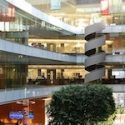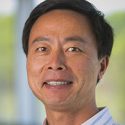Rural Wisconsin high school students learn with stem cells, top UW–Madison researchers
Twenty top science students from rural Wisconsin high schools have earned the opportunity to hone their laboratory skills and work alongside top researchers from the University of Wisconsin–Madison at a summer science camp focused on stem cells.
Hosted by the Morgridge Institute for Research, a nonprofit biomedical research institute affiliated with UW–Madison, the four-day summer science camp starts today (Monday, July 11) and will cover a variety of hands-on activities. Among them: nourishing and dividing colonies of stem cells and learning how the cells can be directed to grow into heart, nerve and other specialized cells.
Alexis Marvin, a student from Crandon High School and member of the Sokaogon Chippewa community, said the opportunity to participate in the Morgridge Institute program will help her explore career opportunities in health care and medical research fields. She is particularly interested in diabetes and heart disease—two diseases that are prevalent among Native Americans and Alaska Natives and are a current focus of stem cell research. Marvin and three other students from northern Wisconsin high schools are attending the camp in conjunction with efforts by the nonprofit Forward Service Corp.’s Educational Talent Search to expand education and skill-building opportunities for students in the region.
“This opportunity will really improve my knowledge of the stem cell research that is currently being done,” Marvin wrote in her application essay for the summer science camp. “Either route I take, becoming a researcher or becoming a practicing doctor, this will give me the bridge that is needed to make the team in health care more successful.”
Marvin and the other students will work with both human embryonic stem cells and induced pluripotent stem cells. Human embryonic stem cells are blank-slate, or pluripotent, cells that have the capacity to differentiate into any of the more than 220 cell types in the human body. The human embryonic stem cell lines or colonies used by the students were established approximately 10 years ago and continue to play a vital role in international research because of their flexibility and well-documented performance characteristics. Induced pluripotent stem cells derived from reprogrammed skin cells show some differences from human embryonic stem cells and also are the focus of much promising research for human health and pharmaceutical development.
The students participating in the camp, held July 11-14, are incoming seniors at schools and educational centers including Edgar High School; Forward Service Corp.; Mukwonago High School; Ripon High School; and Winneconne High School. The students earned the honor of attending through their classroom performance and dedication during months of preparatory study.
The stem cell science camp was designed to provide an enrichment experience in an advanced scientific field while introducing promising students to the variety of academic opportunities on the UW–Madison campus.
“Through the camp, we are able to provide students with an in-depth opportunity to broaden their horizons in science, technology and medicine while highlighting the tremendous career opportunities in these rapidly growing fields,” said Rupa Shevde, a senior scientist and director of outreach experiences for the Morgridge Institute for Research. “The students benefit from learning about the cutting-edge research that is going on while at the same time gaining hands-on experience with stem cells and other critically important research tools. Introducing the students to stem cells allows us to teach a variety of concepts including the genetic aspects of human diseases and important ethical considerations for researchers.”
Students participating in the stem cell camp are:
- Edgar High School: Deserae Hansen; Cash Johnsen; Kaitlyn Skrzypcak; Kelsey Steinke;
- Forward Service Corp.: Jasmine Crofoot, Rhinelander High School; Alexis Marvin, Crandon High School; Brittany Mischo, Wabeno High School; Christina Weyers, Wabeno High School;
- Mukwonago High School: Rachel Antonovich; Logan Beine; Lyndsy Gieche; Tyler McKeever;
- Ripon High School: J.J. Grinde; Andrea Lyke; Rachel Thorson; Lincoln Wurtz; and,
- Winneconne High School: Angoli Schroeder; Ryan Thyssen; Faith VanOss; James Votava.
Human embryonic stem cells were first isolated on the UW–Madison campus by James Thomson, who also was among the first to create induced pluripotent stem cells. Today, Wisconsin researchers are considered leaders in developing an understanding of these cells as they search for stem cell treatments and cures for diseases such as diabetes, Parkinson’s and heart disease.



